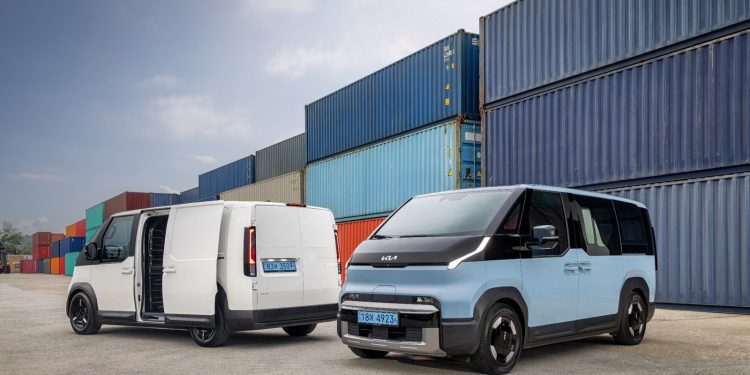Video – Kia PV5 first drive: Future van, man?
Kia’s been teasing its Platform Beyond Vehicle idea for a few years now, promising a modular ecosystem of electric vans and utility bodies that could shift from cargo to passenger use. Pull into a dealership, swap the body, and off you go.
The first real product of that strategy is finally here. It’s called the PV5, and while the whole swapping body concept has not been achieved – yet – the vehicle itself remains interesting and impressive.
From concept to cargo
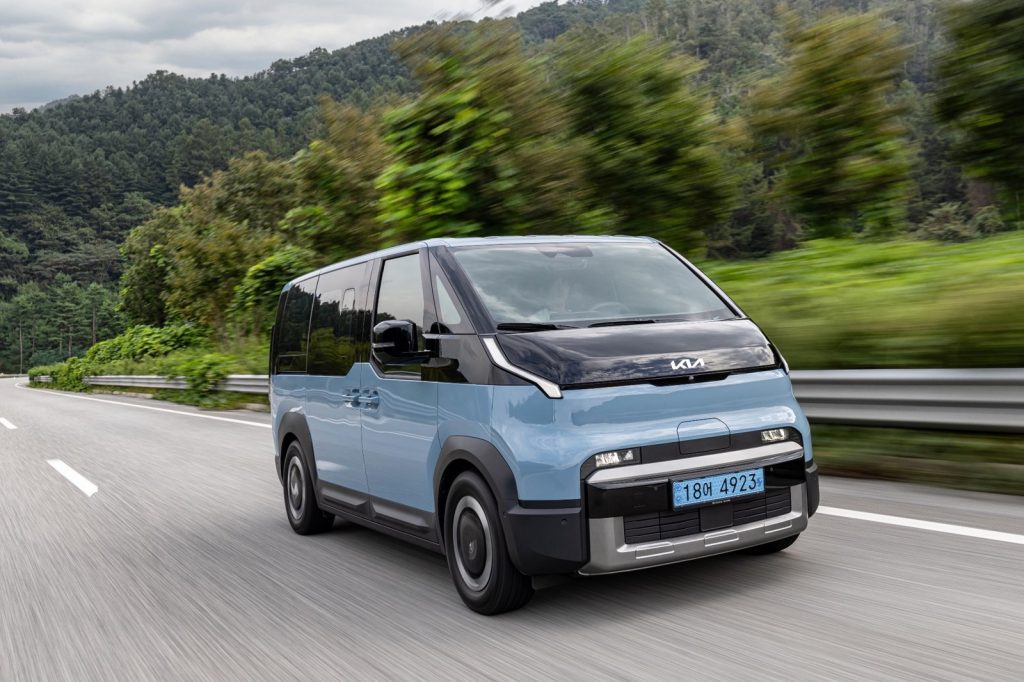
The PV5 is the first of Kia’s dedicated PBV range and the first one destined for New Zealand. Local deliveries will begin in the first quarter of 2026, starting with a cargo version before hopefully expanding into passenger and specialist variants once right-hand-drive production ramps up.
What other PBV options can we expect? A flat-deck truck has been spotted, while a compact PV1, and larger PV7 and PV9 have been hinted at or shown in concept form.
Under the skin it uses a stretched and simplified version of the group’s E-GMP architecture, badged E-GMP.S, and the configuration is at this stage straightforward: a front-mounted 120 kW electric motor producing 250 Nm of torque, drawing from an NCM 71.2 kWh battery. Official range sits at 416 km WLTP, and that figure looks believable. In testing, the dash showed 278 km remaining at 61 per cent charge, which extrapolates neatly to more than 450 km from a full battery.
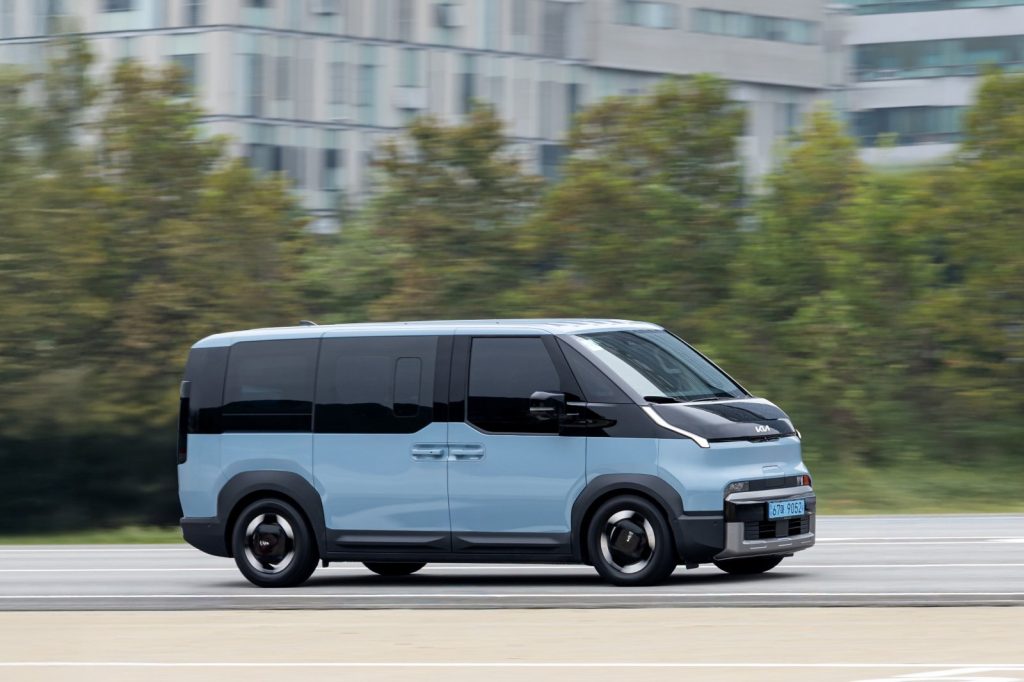
It is hard to assess a van’s efficiency without a load, but with three people on board the passenger version, add in trim, and seats, and you are looking at the equivalent of a moderate load for the cargo version. That makes our average on city and motorway driving of under 16kWh per 100km impressive.
Smaller batteries, as low as 43.3 kWh, will be available in some markets, but we don’t expect to see them here.
Right size
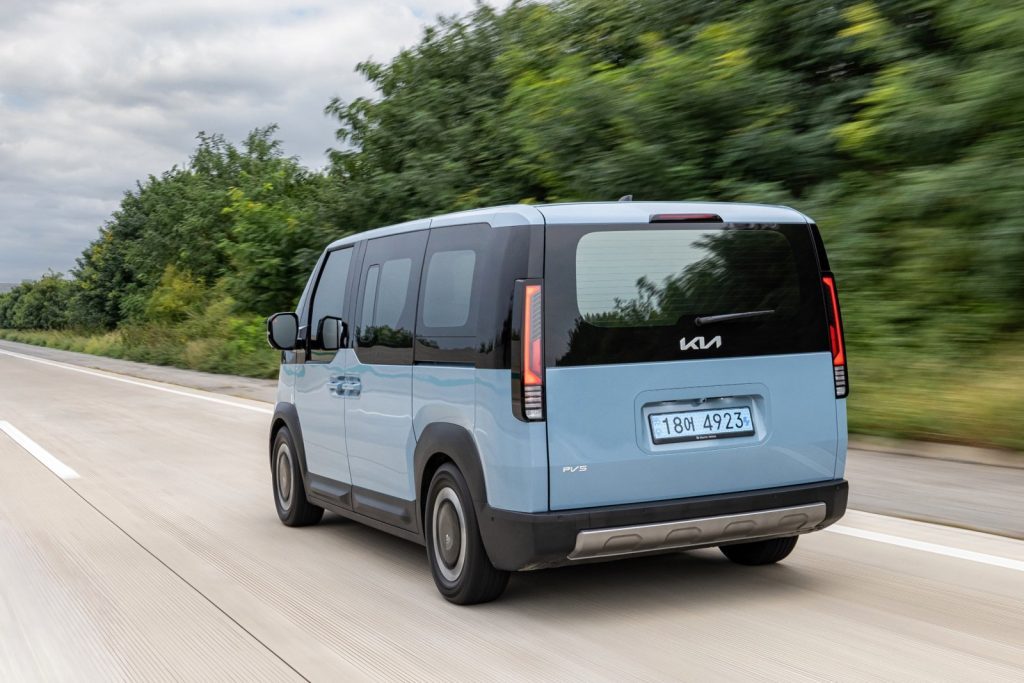
Dimensionally, the PV5 is compact and city‑friendly: 4,695 mm long, 1,895 mm wide and 1,900 mm high in standard‑roof form, on a 3,000 mm wheelbase. There is a slightly shorter compact model but it’s not available yet and likely to stick to markets in Asia and Europe. The High Roof keeps the same footprint but stands 2,200 mm tall. For context, Volkswagen’s ID. Buzz measures 4,712 mm (SWB) or 4,962 mm (LWB) long, 1,985 mm wide and around 1,930 mm tall, with wheelbases of 2,989 mm (SWB) and 3,239 mm (LWB). So the PV5 is a little shorter and narrower than either Buzz, and similar in overall height.
Kia has yet to release weights for the van.
Built like Lego for grown-ups
The cleverness of the PV5 lies in its structure. The core is a steel monocoque, but the body panels ahead of and behind it can be swapped to change roof height or rear length without touching the basic platform. The wheelbase stays fixed at 3,000 mm, yet Kia can build up to 16 body styles on the same production line — from standard-roof vans to high-roof long-body cargo haulers, and even cab-chassis variants for custom builds.
It allows Kia to tailor vehicles for courier fleets, shuttle services or small-business owners without reinventing the core engineering each time, and sticking to one, simplified and very roboticised production line – which we visited on the launch.
Cargo thinking
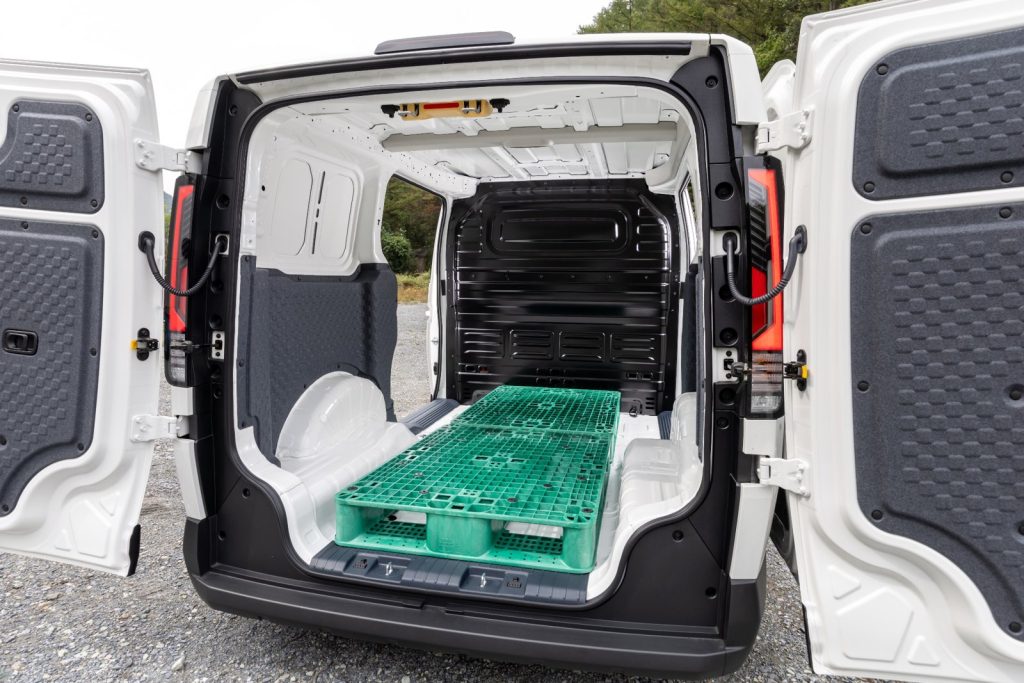
The cargo version, which will lead the launch here, mirrors the passenger model forward of the B-pillar but swaps trim for durability. The load floor is unusually low, so you step up barely knee-high when loading. That’s a small change that makes a big ergonomic difference for anyone hopping in and out all day. On the flip side that means you don’t have a flat floor surface, normally desirable in vans. Kia expects to sell one as an option, while we know at least one supplier offering their own with access to storage underneath. Either way it will fit a Europallet between the wheel arches.
In likely top selling Cargo Long (L2H1) form, the numbers that matter to operators are clear: cargo area length 2,255 mm, height 1,520 mm, and width 1,330 mm between the arches or 1,565 mm maximum. The rear opening measures 1,343 mm wide (or 920 mm at the narrowest point), with a rear step height of 419 mm. The side door opens 775 mmwide with a boarding height of 399 mm. Total load volume is 4.4 m³ (VDA) on this configuration, with a maximum payload of 690 kg for the 71.2 kWh battery, and towing rated at 750 kg.
The sidewalls integrate rail mounts rated to 10 kg each for hooks or shelves, and an under‑floor tub keeps tools or cables out of sight. Buyers can choose an electric tailgate or traditional barn doors, and Kia says both passenger and cargo variants can be configured for dual sliding doors if required.
Passenger comfort
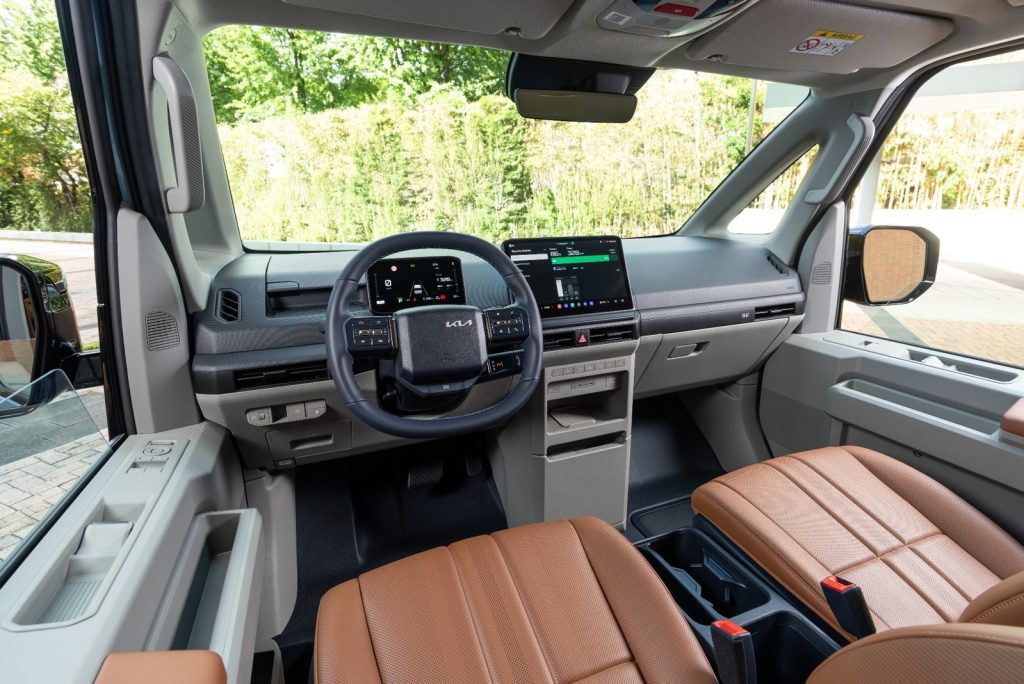
Our drive took place in the five-seat passenger version, trimmed to near-SUV standards. Entry and exit are effortless thanks to a flat floor and wide electric sliding doors. Once inside, the cabin feels light and open — a world away from the dark, hard-plastic ambience typical of commercial vans.
The front seats are electrically adjustable, heated and ventilated, upholstered in soft synthetic leather. The driving position is upright and natural, and the squared-off steering wheel adjusts for both rake and reach, something many vans still neglect. Storage space is plentiful under the floor and between the seats, although the dash lacks the upper trays that couriers love for paperwork.
You do get a 7.5-inch data-rich screen for the driver, flanked by a wide 15-inch digital display running Android-based software. Kia’s move to Android for the PV5 is deliberate; it allows fleet operators to install their own apps, from delivery tracking to passenger-management tools, directly onto the system. The interface can even host digital switches to control auxiliary hardware like chillers or roof-mounted lights — a clever replacement for aftermarket toggle panels.
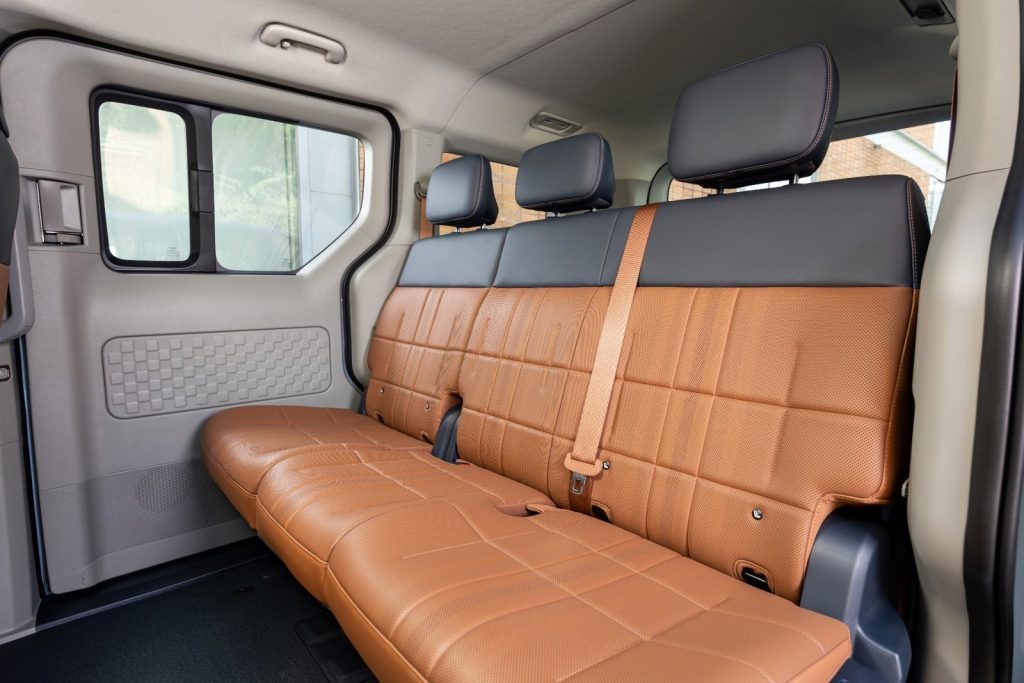
The second floor features a broad, flat, square, but still comfortable, bench. Second row passengers get a small slide opening window in the electric doors, and air vents, but no separate ventilation controls. USB C charging is found in the back of the front seats. This row does have a potential negative in that the split to access the rear is on the right hand side, or drivers side in NZ, which Kia may not switch for right-hand drive. There will be a third row, but while our initial expectations were for a second three-row bench there, a Kia exec confirmed it will be only for two due to vehicle weight limits.
There is also a Tesla-like pet mode, though this writer hates the idea of pets being left in cars even with such a feature. I prefer to call it ‘Husband mode’.
The massive load area in the five-seater features underfloor storage and clever load rails, that with specialist hooks can carry 10kg each. Rails for these attachments can be found around the van, including for a phone holder on the dash.
Power to spare
Every PV5 includes proper vehicle-to-load capability. The onboard inverter supplies 250 volts at 16 amps — about 4 kilowatts — through outlets in both cabin and cargo area. That’s enough to run power tools, a laptop, or even a coffee machine. It’s far more robust than the token 300-watt sockets found in some rivals and genuinely replaces a small generator for site work or camping.
On the road
Vans aren’t usually described as pleasant, but the PV5 earns the label. Steering is light yet precise, the suspension well-damped, and overall refinement more akin to a mid-size SUV than a delivery vehicle. The battery’s low mounting gives a planted feel through corners, while ride quality stays decent even when we were faced with near endless Korean speedhumps. High-speed composure is excellent for a van. The cabin stays quiet, with little tyre roar or wind noise despite the van’s profile.
While most of our driving was in the passenger version, we took the cargo for a quick run and found little difference – even with slightly more durable appointments it remained quiet and refined. A key positive is cab size, with the safety barrier fitted in a position allowing for ample seat travel forward and aft, not always the case.
With just 120kW and 250Nm on offer performance is modest on paper — around 10 seconds to 100 km/h — yet it feels quicker in practice thanks to instant torque. Regenerative braking is adjustable via paddles, allowing near one-pedal driving in traffic and has an intelligent automatic mode. The front-wheel-drive setup copes well with the power.
Kia’s latest level 2 lane-keeping assist and adaptive cruise control work smoothly, maintaining lane position and speed with minimal driver input. It’s not pretending to be autonomous, but it’s easily the best driver-assist tuning we’ve experienced in a commercial EV.
Charging and connectivity
The charging port sits in the nose, handy for most public stations, and the 150kW DC charging speed is second only to the ID in the van space. For depot operations, the 11 kW AC system is arguably more important than the DC speed. It allows multiple vans to recharge simultaneously from relatively inexpensive infrastructure — a smart move for New Zealand businesses upgrading to electric fleets without spending big on rapid chargers.
Kia’s app works with the PV5 despite its unique tech stack. While it still uses a conventional key rather than full phone-as-key functionality, the vehicle supports over-the-air updates, ensuring the infotainment and energy-management systems evolve over time. Fleet operators will appreciate the ability to push software updates or monitor usage remotely.
Safety equipment is comprehensive: seven airbags, blind-spot monitoring, collision avoidance, adaptive cruise, and a high-strength body designed to meet upcoming Euro NCAP protocols. Kia expects at least a four-star rating, and possibly five once passenger models are tested.
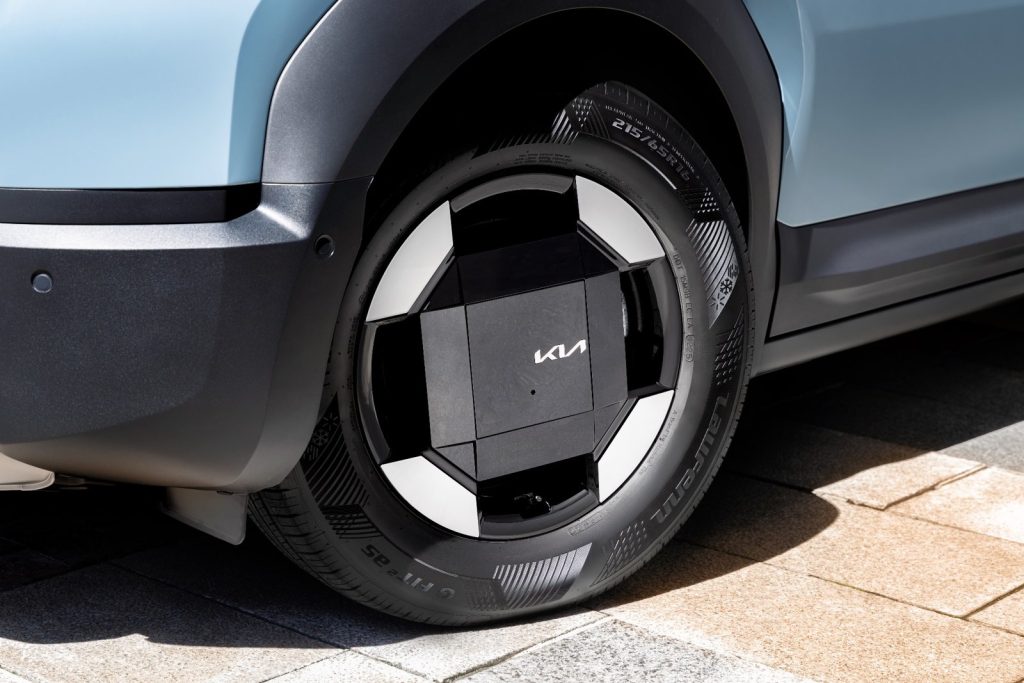
New Zealand prospects
Kia New Zealand couldn’t provide us any specifics on the van at the time we went to press, other than that the PV5 Cargo will arrive in early 2026.
Pricing is still to be finalised but our best guess is a start point in the mid-to-high $70 thousands before on-road costs. That puts it squarely against Ford’s e-Transit Custom and LDV’s eDeliver 7, both of which offer smaller batteries and less V2L capability but more payload.
We expect the initial target market will be fleet and business customers chasing lower operating costs and sustainability credentials. Electric vans is a small – but growing market. So why the cargo first? Well the market for electric van-based people movers is even smaller. But we hope they bring it and we hope there is demand.
Verdict
Kia’s first PBV doesn’t feel like a concept or a compliance exercise — it feels ready. It’s cleverly packaged, surprisingly refined, and genuinely innovative in its flexibility. By designing a vehicle that can be both a delivery van and a passenger shuttle the next, Kia has rethought the category rather than just electrifying it.
If pricing stays sensible and range holds up under Kiwi conditions, the PV5 could become the tipping point for electric vans in New Zealand. It’s practical, comfortable, efficient and even very likeable.


